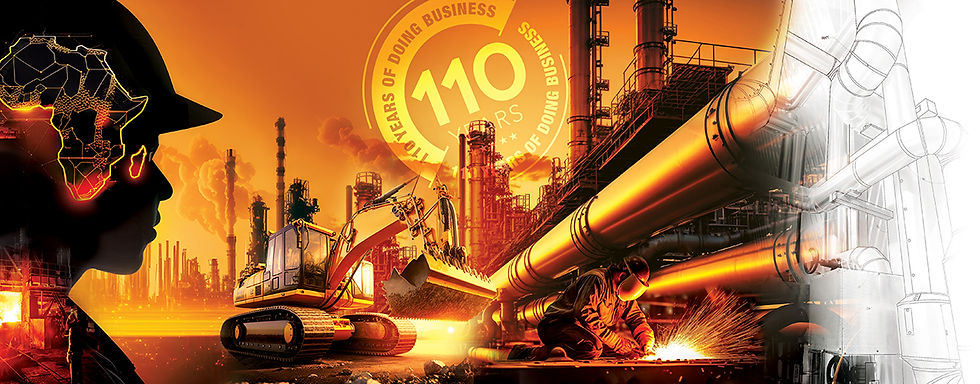PRECAST REFRACTORY SHAPES OFFERING ENHANCED PERFORMANCE FOR CEMENT PLANTS
- DGC AFRICA

- Jun 20, 2022
- 2 min read
Updated: Apr 9, 2024
Refractory maintenance is highly resource intensive, requiring significant levels of downtime, planning, manpower and equipment amongst others.
Where standard bricks cannot be used, conventional methods of installing monolithic refractories require more of these resources throughout the various stages of a typical refractory maintenance campaign; including refractory anchor installation, refractory installation, furnace heat-up and commissioning.
The level of workmanship and environmental conditions under which the monolithic refractories are mixed, installed, cured and dried may result in variations in the lifetime performance of refractory linings. This becomes particularly problematic in areas where refractory linings are subject to high rates of wear due to the conditions characterised by extreme heat, abrasion, mechanical stress and chemical attack in which linings constantly operate in. Premature failures result in unplanned stoppages and require costly repairs, with entire sections requiring removal.

The use of modular designed precast refractory shapes in such areas significantly reduces the frequency and resource intensity of refractory maintenance campaigns in terms of duration and project costs as follows:
Shortened pyro-system cool-down periods as modular panels can be safely removed from the outside of a unit, without personnel entry.
No need for extensive on-site demolition as worn-out modular sections may be isolated, dismantled and replaced.
Refractory installation changes from a high speciality exercise to a simpler rigging exercise. This reduces installation time and labour requirements.
Performance consistency as material mixing and casting performed off-site in a controlled environment.
Complete spare precast blocks may be stored on-site awaiting final installation.
Shorter and safer installation.
Faster furnace heat-ups

Dickinson Group of Companies has been designing, manufacturing and installing customised precast refractory shapes for several industries, including Cement since 1986. The cement plant precast refractory shapes are manufactured offsite under controlled conditions and dried-out at purpose designed production facilities under stringent quality control measures to ensure an enhanced product service life. The production process involves manufacturing accurate moulds, precise mixing of material, casting, curing and drying at temperatures up to 1 000oC; allowing the formation of ceramic bonds.
ATTRIBUTES OF PRECAST REFRACTORY SHAPES
Consistent and controlled manufacturing process.
Unique purpose developed materials and shapes for each application.
Most of the work is done off-site resulting in minimum interface with production.
Areas of higher wear can be engineered with optimal refractory materials.
Quicker installation.
Shapes can be from 1 kg to 9 metric tons, resulting in less joints and higher energy efficiencies.

PRECAST REFRACTORY SHAPES FOR CEMENT PLANTS
The company’s range of common precast refractory shapes that has been developed and installed in various cements plants are listed below:
Cooler Bullnose
Kiln Hood
Precast Cyclone Roofs
Burner Pipes
Tertiary Air Duct (TAD) Dampers
Nose Ring Blocks
Calciner Roofs
Cooler Benches
Cooler Roof Sections


ABOUT OUR COMPANY, HISTORY, AND PARTNERS
Dickinson Group of Companies (DGC) was founded in 1910. For comprehensive information about Our Company – History, Vision & Values, Strategy, Global Alliances, Africa Footprint, Our Commitment to Safety, Anti-Corruption Policy, References, and Industrial Solutions, please visit our website.





Comments